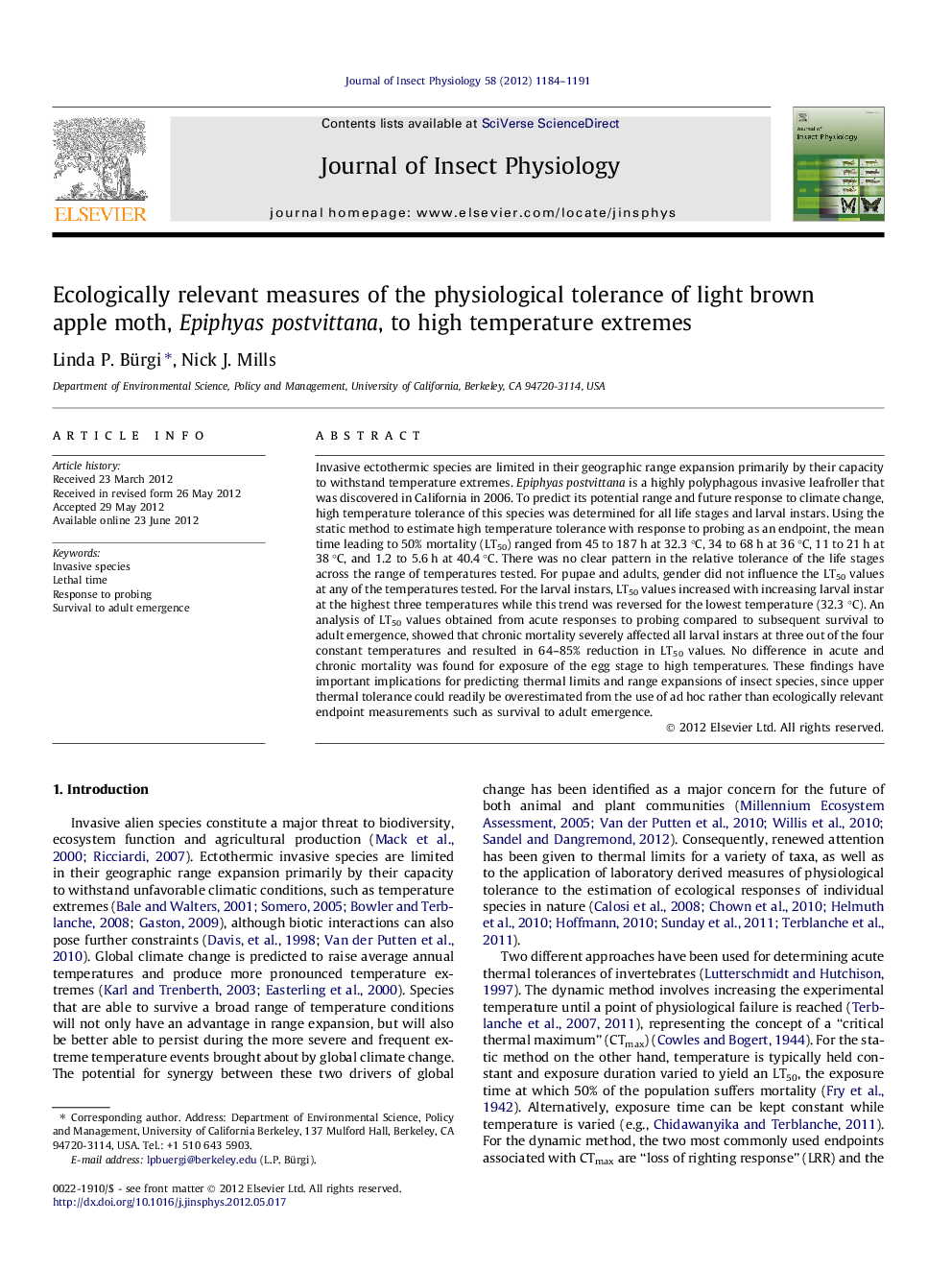| Article ID | Journal | Published Year | Pages | File Type |
|---|---|---|---|---|
| 5921786 | Journal of Insect Physiology | 2012 | 8 Pages |
Invasive ectothermic species are limited in their geographic range expansion primarily by their capacity to withstand temperature extremes. Epiphyas postvittana is a highly polyphagous invasive leafroller that was discovered in California in 2006. To predict its potential range and future response to climate change, high temperature tolerance of this species was determined for all life stages and larval instars. Using the static method to estimate high temperature tolerance with response to probing as an endpoint, the mean time leading to 50% mortality (LT50) ranged from 45 to 187 h at 32.3 °C, 34 to 68 h at 36 °C, 11 to 21 h at 38 °C, and 1.2 to 5.6 h at 40.4 °C. There was no clear pattern in the relative tolerance of the life stages across the range of temperatures tested. For pupae and adults, gender did not influence the LT50 values at any of the temperatures tested. For the larval instars, LT50 values increased with increasing larval instar at the highest three temperatures while this trend was reversed for the lowest temperature (32.3 °C). An analysis of LT50 values obtained from acute responses to probing compared to subsequent survival to adult emergence, showed that chronic mortality severely affected all larval instars at three out of the four constant temperatures and resulted in 64-85% reduction in LT50 values. No difference in acute and chronic mortality was found for exposure of the egg stage to high temperatures. These findings have important implications for predicting thermal limits and range expansions of insect species, since upper thermal tolerance could readily be overestimated from the use of ad hoc rather than ecologically relevant endpoint measurements such as survival to adult emergence.
Graphical abstractDownload full-size imageHighlightsâºHigh temperature tolerance was determined for all life stages of the invasive Epiphyas postvittana. âºWe compared ad-hoc endpoints and the ecologically relevant endpoint of adult emergence. âºUsing the more ecologically relevant endpoint reduced LT50 values at 3 out of the 4 high temperatures.
